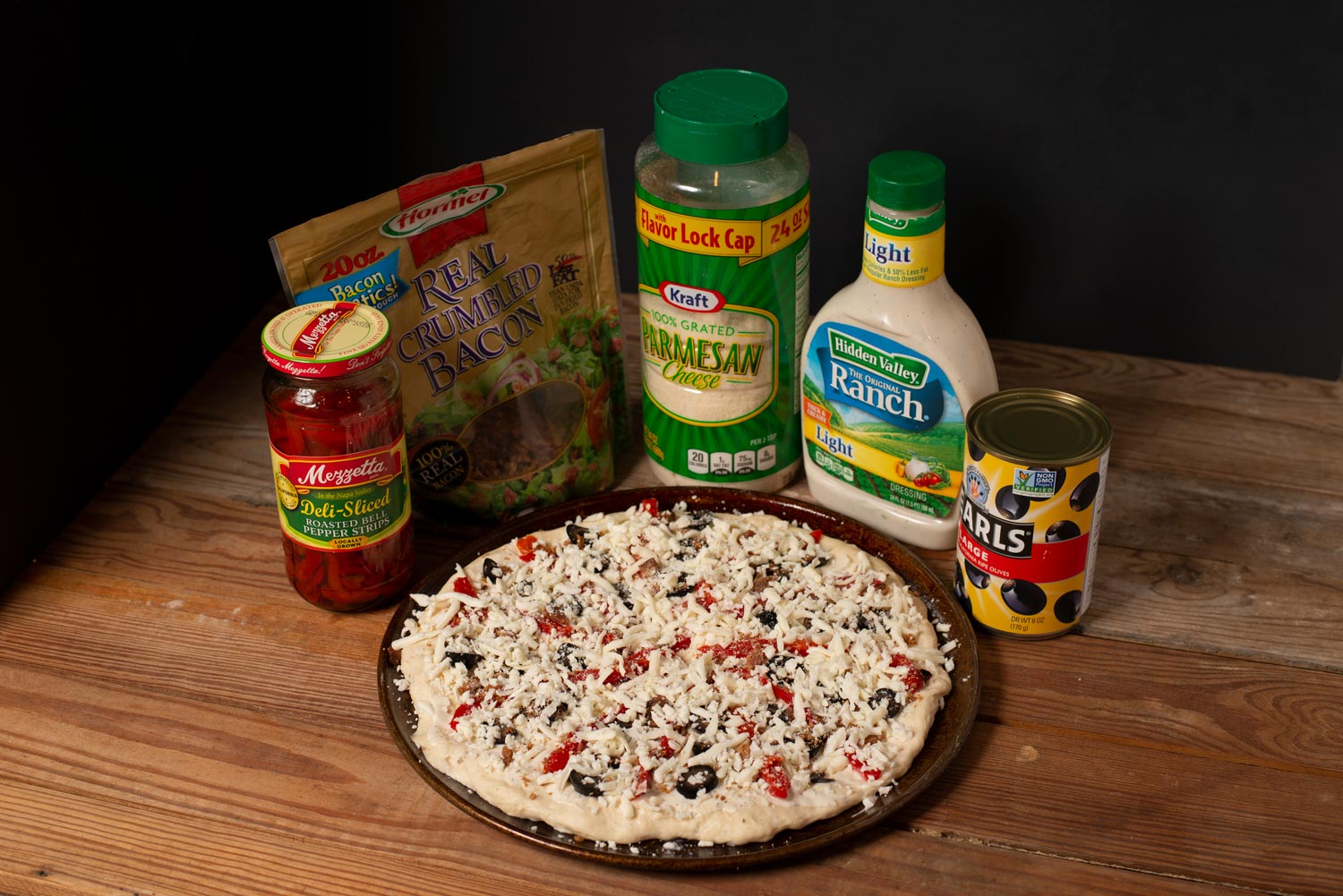Store What You Eat Guidelines
Photos by Forrest Anderson
Preparation is the key to confidence in a crisis.
It’s safe to say that the global COVID-19 crisis has been a major wake-up call on the subject of advance planning and preparation. The crisis has highlighted the vulnerability of the global food supply chain and sparked a major trend/frenzy of people stocking up on food and supplies.
As the pandemic took hold, the Centers for Disease Control and American Red Cross advised people to keep a two-week’s supply of food in case they had to self-quarentine, got sick or had to shelter at home. After months of people sheltering at home and dealing with shortages of basic items such as flour and yeast at stores, that recommendation alone now seems way optimistic.
Many people who once scoffed at preppers are reconsidering the notion of keeping several months’ supply of food on hand on a permanent basis. At the same time, hoarding and panic buying have exacerbated shortages of some foods and many people are concerned about spending extra money on food when they might be laid off amid the pandemic’s economic upheaval.
How to handle this dilemma has become a high priority, so let’s look at what is happening with the food supply and what a rational home storage plan looks like.
As described in last week’s blog on flour shortages, the pandemic has revealed a major chink in the stability of the global food supply. Our food supply has over the past several decades become overwhelmingly reliant on large corporations that ship food globally via highly efficient transportation channels. The system normally delivers abundantly, but parts of it have not adapted quickly to the pandemic’s disruption of supply chains. Most items that have been scarce have been locked into inflexible chains of contracts between farmers, processing plants and food distribution facilities. It hasn’t been easy for participants in those chains to adjust as consumers have switched from eating out to cooking at home. Routing food supplies away from restaurants to supermarkets has been challenging when farmers are under long-term contracts to supply food to large processing plants that in turn send them to wholesale suppliers for sale to restaurants. Many farmers who produce single products for one buyer are under contract to dump their products if they can’t be sold. If a processing plant with contracts with a large restaurant chain has had to close because the chain’s restaurants have closed, farmers under contract to the plant can’t sell their products and have had to destroy them.
The most worrisome shortage has involved meat, as some large meat plants have closed because of COVID-19 outbreaks among their workers and it is unclear when they might reopen.
There could be continuing temporary disruptions for a number of reasons. Border closures are preventing millions of migrant workers from harvesting food and working at food production plants. Trade restrictions have increased supply chain problems. China is buying food supplies heavily as it is coming out of lockdown. Prices are rising. The pandemic is exacerbating food insecurity for millions of people globally.
While the pandemic has thrown into sharp focus this supply chain vulnerability, it is far from the only crisis that can affect the food supply either globally or on a regional basis. Natural disasters such as hurricanes, drought and earthquakes and man-made crises such as transportation strikes, terrorism, wars, civil unrest, massive infrastructure failures that could leave millions without electricity or clean water and economic downturns are other threats to this system.
Long term, the world’s food supply has been at risk because of global warming’s effect on the three major breadbasket areas in the United States, Europe and China. Warming weather is increasing the insect populations of these crucial agricultural regions and with it the loss of crops from pest infestation. There has been an overall reduction in the global production of staples such as rice and wheat, especially in developing countries with insecure food supplies. Extreme weather events such as droughts and intense storms are negatively affecting grain crops. Such changes in climate are shifting production of key commodities to new regions, with declines in others. The population is growing.
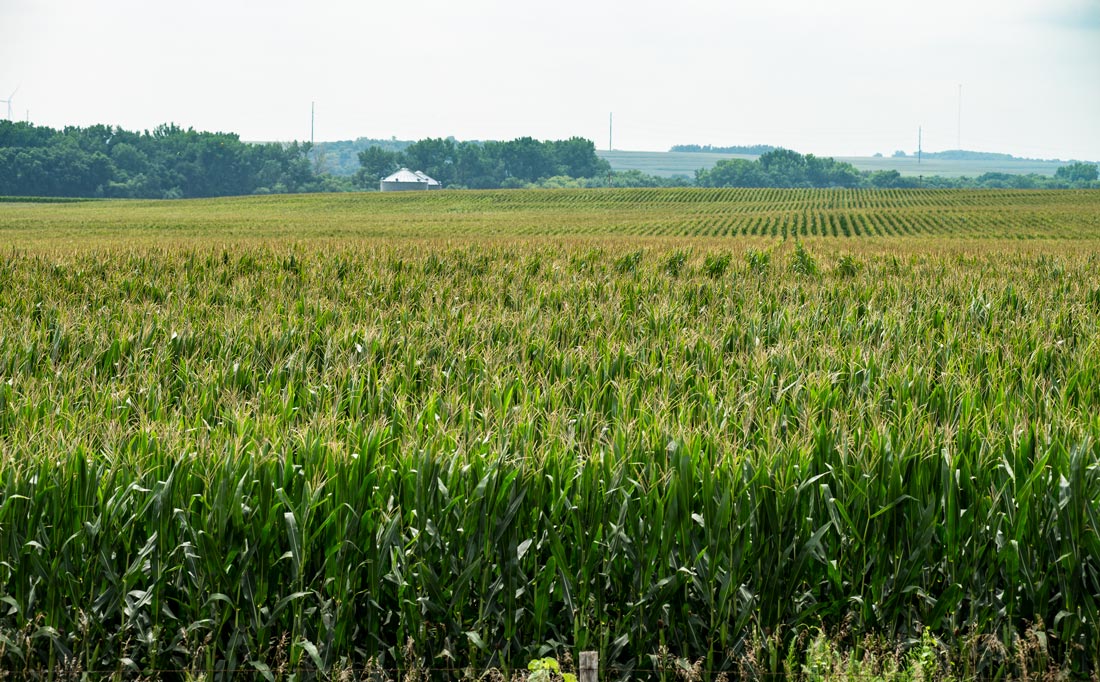
Some crops in America's vast breadbasket are becoming vulnerable to pest damage because of climate change.
More countries and regions are importing more food rather than relying on regional supply chains, making them more vulnerable to global disruptions. This is not just true in developing countries. Alaska, for example, once produced 55 percent of its food supply but now imports 98 percent of it. An interruption in its food supply for just a month could cause significant problems there.
To mitigate these problems, dramatic changes in consumer habits will be needed in the future. The good news is that the pandemic has shown that people can make such adaptations in their shopping and consumption habits. It also has helped people see the costs of not preparing for crises in advance and made them more aware of where their food comes from, the huge amount of food that is wasted and the fragility of the supply chain.
Experts have warned of the need to prepare for pandemics for years. Now that one is here, it has become clear to many that it is wise to keep several months’ supply of basic food on hand, perhaps for no other reason than that we can carry on with less stress while supply chains adjust to a crisis. So how do we do this responsibly?
The extra food and supplies that a family realistically can or should have on hand varies with their resources, storage space, personal needs and preference. Generally, a three-tiered approach to home preparation is recommended.
The U.S. government and many state and local governments have based their disaster response on the expectation that citizens will keep enough emergency supplies on hand to survive a disaster such as a hurricane or earthquake for 72 hours until emergency response personnel can get to them. This means having both an evacuation kit and some supplies for sheltering at home. In addition, the American Red Cross, Centers for Disease Control and other national organizations have long recommended keeping a two-week supply of food and other supplies on hand.
A smaller number of other organizations also recommend that people keep three to six months’ supply of basic, non-perishable foods on hand. This was standard procedure for most families in past generations and many families still employ some version of it by buying bulk items at big-box stores. Many others have discarded this time-honored approach in recent decades, as food has been in abundant supply and more than half of our food has been consumed in the form of eating out. Many families were caught unprepared for the pandemic as a result and are unsure of what items they should have on hand or how to obtain them.
The following is a summary of the three tiers of preparedness and items it is wise to have on hand. The three tiers should act in concert with each other and with a family’s normal grocery shopping patterns. It isn’t necessary to rush out and buy everything one could possibly want for several months. The idea behind home storage is to mitigate the severity of crises by having some supplies to take pressure off of yourself and the economy in general when needed.
Tier 1 - a 72-hour emergency supply
- One gallon of water per person per day for at least three days, for drinking and sanitation.
- At least a three-day supply of non-perishable food, including items you could carry with you if you had to evacuate your home and that you could eat without cooking.
- A battery-powered or hand-crank radio that can charge electronic devices and a NOAA Weather Radio with tone alert.
- A flashlight and possibly another light source (solar might be best because you wouldn’t have to worry about batteries).
- Extra batteries.
- A first aid kit.
- Sanitation needs — toilet paper, soap, feminine supplies, plastic garbage bags and ties, a plastic bucket with a tight lid, chlorine bleach.
- A wrench to turn off gas and water lines.
- Disposable cups, plates, and utensils.
- A manual can opener.
- A small fire extinguisher.
- Pliers.
- Duct tape.
- Matches in a waterproof container.
- A plastic storage container to keep everything in.
- Documents. Scan your valuable documents and store them offsite. Keep copies of key items like insurance cards, social security cards, passwords, insurance policies, a home inventory, wills, contracts, deeds, passports, immunization records, bank account numbers, credit card account numbers and companies and family records including birth, marriage, and death certificates in your emergency kit.
Tier 2 - A two-week supply
This is the maximum time that most fresh foods will keep, and the minimum time that the government recommends that people who are exposed to the coronavirus should self-quarantine.
Here are some guidelines for a two-week supply:
- Root vegetables such as butternut squash, beets, sweet potatoes, potatoes, onions and carrots. Don’t store potatoes and onions in a plastic bag in the refrigerator. Keep them in wire baskets or mesh bags at room temperature. Don’t wash them until you are ready to use them, because they will spoil faster.

Sweet potatoes are easy to prepare, nutritious and last for two weeks or longer.
- Milk – fresh, dehydrated, shelf-stable or evaporated. Also consider non-dairy beverages such as coconut or almond milk, which can be stored on a shelf. Milk can be frozen and thawed when you need it.
- Cheese, both block-style and shredded, will last for at least two weeks. Hard cheese such as cheddar and pecorino last for a month. Soft cheeses last for about two weeks.
- Eggs keep for up to two months, but you can also freeze them. Crack them into a greased muffin tin, freeze them and then remove them from the tin and put them in a freezer bag and back in the freezer. When you want to use one, take it out and thaw it in advance at room temperature, not in the microwave. Eggs will keep for three months frozen. When I use a recipe that requires only egg whites, I freeze the yokes for future use.
- Meat. Raw chicken, beef or fish can last for about three days in the refrigerator, but watch the expiration date, color and odor and toss it if it changes. When cooked, it will last three-four days. It needs to be kept at a temperature of 40 degrees F or lower, so don’t buy the package on top of the stack. Go straight home and put it in the refrigerator. Don’t place it on the door. If you aren’t going to use uncooked meat right away, freeze it. It will keep for about four months and is easy to thaw in the microwave. Cooked meet usually doesn’t freeze well.
- Frozen pre-made meals such as burritos and pizza and frozen French fries or hash browns.
- Snacks.
- Apples and oranges last for two-three weeks in the refrigerator.
- Bananas. You can peel and freeze them and use them in smoothies and banana bread.
- Basic goods like flour, yeast, baking powder, baking soda, salt and spices. Also store some boxed items and mixes.
- Beverages of your choice.
- A month’s supply of medications you are taking and self-care items you need for chronic disease such as blood glucose test strips for diabetes. If you have an allergy, store Benadryl or Claritin.
- Foods you can’t do without for health reasons, such as glutin-free foods if you have a gluten intolerance.
- Pain relievers, stomach remedies, cough and cold medicines, fluids with electrolytes and vitamins, a fever thermometer and medications.
- Baby formula, diapers, baby food and wipes if you have an infant.
- Children’s medications such as fever reducer.
- Pet food and cat litter.
- Disinfectant cleaners and disposable wipes. Keep your home, vehicle and phone wiped down to kill virus that might be on surfaces.
In addition, here are some other wise preparations:
- There hasn’t been a problem during the pandemic with using electric or gas stoves and ovens, but in a severe storm, have food on hand that you don’t have to cook. Have an alternative means to cook such as a firepit and some matches and wood or a small camp stove in case you have to go without electricity or gas for several days.
- Have can openers and other essential utensils and appliances that you need to prepare food.
- Keep gas in your vehicle and some cash on hand. Keep antibacterial wipes and/or hand sanitizer in the car so you can use them after going to a high-risk area. Make sure your hand sanitizer is at least 60 percent alcohol-based.
- Wash your hands before, during and after preparing food, before eating, before and after caring for someone who is sick, after changing diapers, after using the bathroom and other times when it seems reasonable.
- When you have to get supplies, try to get them delivered. If you have to go out, wear a mask and maintain social distance.
- Check regularly on family and neighbors by phone and email (perhaps through a group email list), without violating self distancing. Monitor the spread of the coronavirus in your community and keep up to date on local news and national updates.
- Keep contact numbers handy for your primary care doctor, specialists that your family members are seeing and the pharmacy you use. Call your doctor if you’re sick. Don’t just show up at a hospital or doctor's office. If you become seriously ill, call 911.
- Plan ahead for family members and pets to be taken care if someone in your family gets sick or is self-quarantined.
- Make a plan to deal with working and learning at home.
Tier 3 – A three-to-six month supply of basic foods and other supplies, maintained and replenished on an on-going basis.
Having this longer-term supply can keep you safer because you need to leave home less to buy food. If you become ill for longer than two weeks you have extra supplies to draw upon until you can safely leave the house. It also can help you weather food shortages, job layoffs that leave you short of cash, rationing of food and food price increases.
How can you start to work on getting this supply without panic buying, wasting food by acquiring too much or going over your budget?
Buy only what your family will eat. You can figure that out by keeping your grocery receipts for three-four weeks and making a list from the receipts of what you eat and how much of the items. This will help you know how much you would need of each item for a few weeks or months. Put that list in an app and use it to keep track of and replenish your food supply. Gradually acquire enough basic dry and canned foods for three-four months by buying extra items when they are on sale.
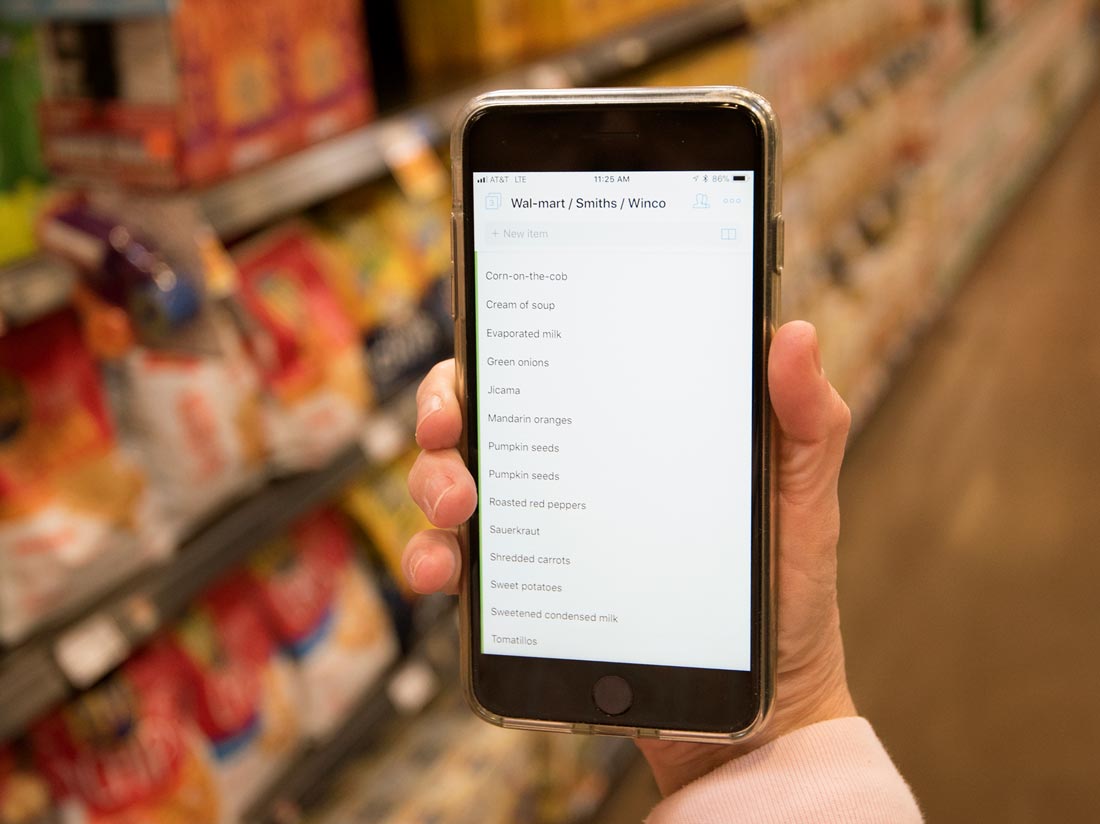
Once you have acquired several months’ supply, you can continue to maintain it even if stores periodically ration goods because you can replace items within the ration limits. Maintaining a several months’ supply as a standard part of your lifestyle dramatically reduces your stress level and the disruption in your life when there is a crisis that affects the food supply. We discovered this when we lived in North Carolina, which had winter ice storms and hurricanes that sometimes brought life to a halt and required people to shelter at home. Because we kept several months of basic foods on hand, these storms were simply a relaxed time for us to stay home and be together as a family. Meanwhile, some of our acquaintances ran out of food within a couple of days.
Having extra supplies on hand also is great when you have unexpected needs. It can help you weather financial crises. We bought several months’ food supply with money we received for a wedding gift and then used it to help lower our grocery bill so we could afford college tuition. This helped us graduate from college debt-free. Later while saving for one of our children’s adoption fees, we rerouted most of our grocery bill into the adoption fund and temporarily lived off our extra food supplies. This strategy helps if you have a car accident and need to purchase a new car unexpectedly, the refrigerator or washing machine dies and needs replaced or a variety of other unexpected setbacks happen. Once you recover, shop sales to rebuild your food supplies.
As you do this over time, it becomes a habit. You aren’t hoarding or panic buying. You are buying items you know you will use. Gradually add items to your storage when you go to the store until you are comfortable with the amount of food you have stored. Never buy more than will fit into your storage space.
Here are suggestions of storage items:
- Canned goods – Beans, soups, vegetables, fruits and pasta sauces. Canned vegetables such as corn, carrots and green beans are great additions to soups and salads. Canned beets are good in salads. Get canned mixed fruit bowls, peaches, pears, pineapple, grapefruit and mandarin oranges and add them to salads. Always look for low-sodium varieties of canned goods.
- Flour – store the types you use regularly.
- Rice in varieties that you eat. You can freeze extra cooked rice in single portions and thaw it when you want to eat it.
- Chicken broth powder.
- Cornmeal.
- Oats.
- Dried pasta.
- Baking powder.
- Baking soda.
- Yeast.
- Salt.
- Sugar, brown sugar and powdered sugar.
- Cornstarch.
- Oil.
- Butter – it will keep for several months in the refrigerator and you can freeze it for up to a year.
- Nuts.
- Nut butters that your family likes.
- Jelly or jam.
- Honey. It lasts a long time and is good for both putting on bread and biscuits and as a baking and sauce ingredient.
- Pickles.
- Mustard.
- Mayonnaise.
- Dried onions so you can grab a handful to toss into a crockpot soup.
- Favorite bottled salad dressings.
- Favorite sauces such as soy sauce, Worcestershire sauce, ketchup, teriyaki sauce and pasta sauces.

Storing your favorite store-bought sauces or ingredients for simple homemade ones such as the one on this chicken can make it easy to prepare delicious meals.
- Popcorn – microwaveable or old-fashioned for nights watching Netflix.
- Dry cereals for breakfasts.
- Seeds such as sunflower seeds and pumpkin seeds.
- Frozen vegetables and fruits if you have a freezer. Buy only the kinds you normally would eat. You can freeze extra fresh vegetables as well. Blanche green beans, broccoli, asparagus, bell peppers, carrots, corn, zucchini, squash and dark leafy greens first in boiling water for two minutes, then dunk them in icy water. Pat them dry, let them cool and then freeze them in Ziploc bags. Don’t freeze raw potatoes, celery and lettuce.
- Freeze extra berries, cherries, peaches, plums and nectarines by washing and drying them thoroughly, slicing them, and lining the slices in a single layer on a baking sheet. Freeze them until they are solid and transfer the fruit to a freezer bag or sealed container. When you want to eat them, scoop out as much as you need.
- Meat, poultry and fish in the freezer. Easy ones to use are hamburger patties, sausage, bacon and hot dogs. Canned chicken is also nice to have for sandwiches. Deli meat and seafood freeze well. Roasts can be thawed and roasted the first day, then sliced for sandwiches the second, then chopped up and put in soups or fajitas the third day. Don’t refreeze meet that has been defrosted.
- Bread. Wrap it in aluminum foil and then in a plastic bag, then pop it into the freezer. The day you want to use it, take it out and let it thaw for several hours at room temperature.
- Ice cream and a box or two of no-sugar ice pops can be a treat when you’re sheltering at home.
- Yogurt changes texture when frozen so only use it in baked goods or smoothies if you have frozen it. You can freeze it in ice cube trays and use it in smoothies.
- Basic spices and seasoning mixes are useful to sprinkle on roasted potatoes, rice or meat for an easy meal when you are crunched for time.
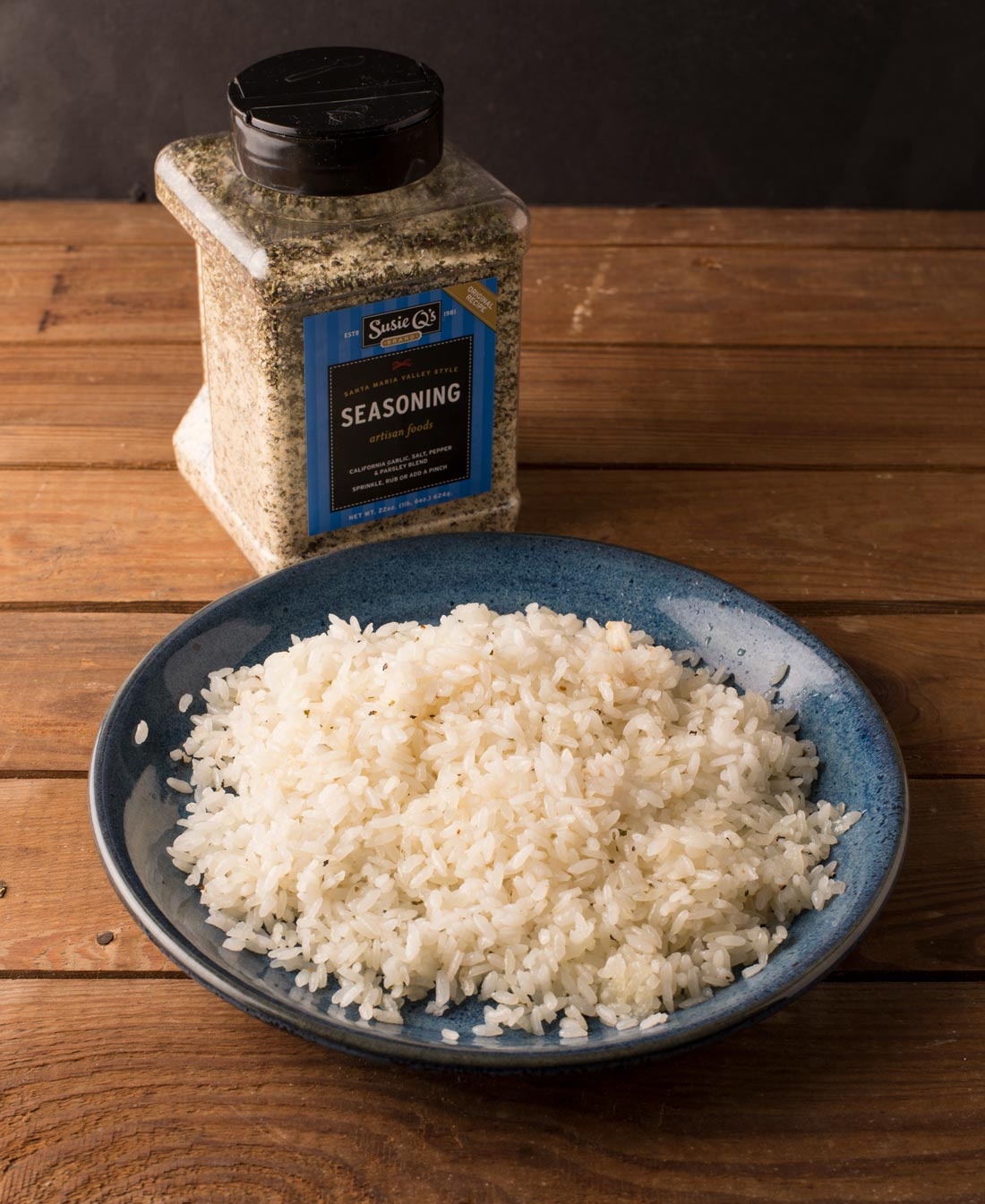
- Boxed macaroni and cheese and other semi-prepared mixes. If you like items such as brownies, stock up on a few mixes when they go on sale. They come in handy when you have to make goodies for an unexpected event. Storing extra food doesn’t mean you have to do everything from scratch. When you are in a crisis or someone in your family is ill is the last time you want to expend extra effort measuring out a teaspoon of this or that. Having mixes and frozen prepared foods on hand can be a lifesaver.

Keep your favorite easy versatile recipes on hand for stressful times. Being able to throw canned corn, beans, hamburger, dried onions and taco seasoning into a crockpot for a Mexican soup on a stressful day can be a real boon. You can repurpose the leftovers in taco salad the next day and in enchiladas a third day. A spaghetti sauce can go on pasta the first day, pizza the second and in a lasagna the third day.
Make crockpot chili to serve with bread, cornbread or biscuits and a salad the first day, then top baked potatoes with leftover chili the second day and serve chili on top of pasta or in tortillas the third day. Cut up a big pile of ham, hard-boiled eggs, cucumbers, black olives, canned pineapple and red peppers and use some of them with shredded cheese in chef salads the first day. The second day, use leftover ham, pineapple, olives and cheese to top a pizza. Not having to cook from scratch every day is important when a family member is sick or you are juggling remote work and helping children with homework. Keep taco seasoning, pancake mix and other semi-prepared foods for these times.
Keep meals basic and make the at-home dining experience fun by having an indoor picnic or creating a DIY taco bar, salad bar or potato bar.
Store dry ingredients such as flour, sugar and cornmeal in airtight, labeled containers.
When you store extra food, read labels to know how long food will last. Here’s what they mean:
The “best by” date isn’t an expiration date, but the manufacturer’s estimate of when food will no longer be at peak quality. The date on meat such as ground beef or pork indicates peak quality, not expiration.
The “sell-by” date indicates a manufacturer’s suggested timeline for a retailer to sell a product so it will still be good quality for a reasonable amount of time after purchase. Milk is often good for a week after its “sell-by” date, if it has been unopened and stored properly in the refrigerator. For dairy products, don’t eat anything that smells off or changes color.
Temperature is a key to maintaining food safety. Food stored between 40 and 120 F (4 to 49 C) could be unsafe long before its use-by date.
Organize your pantry according to how you use food, like a mini-grocery store. Keep baking supplies in one area, canned vegetables and fruits in another and snacks in a snack area. I organize ingredients for Mexican foods on one shelf, Italian foods on another and Asian foods on another. That way, I only have to “shop” in one place when I want to make a certain type of food. Keep cereals and bowls close together. Store rarely-used items like ice cream makers, punch bowls. coolers and purely decorative items up high and reserve lower shelves for items you use constantly. Try to maintain instant visibility to what you have and need. If you have deep cupboards, you can store tall items in the back and shorter ones in the front to help with visibility. If everything is visible, you can quickly look through your kitchen and pantry and identify what items you need to buy.
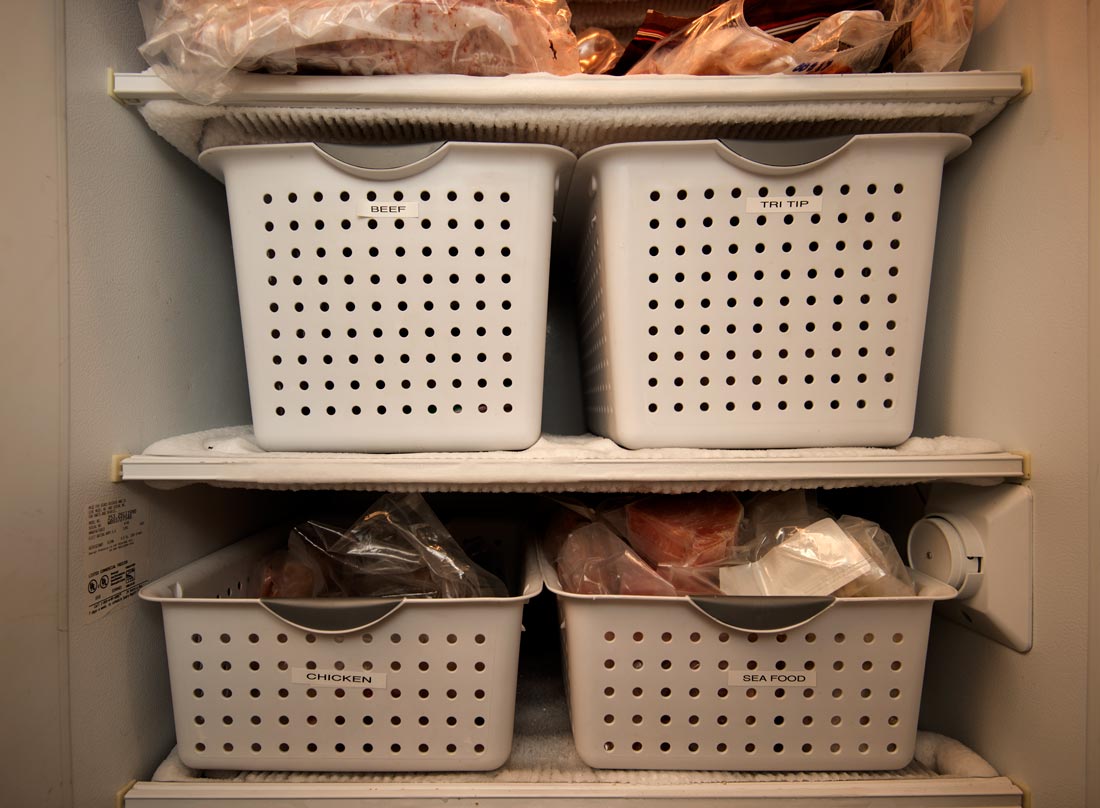
Store foods so that you have visibility to them and know whether you need to replace them.
Don’t store food in a hot attic or unheated and cooled garage – the temperature fluctuations can cause the food to deteriorate quickly. Use this space for non-food storage instead. Many people keep food in their basement because it is cool. That makes sense, but keep it on shelves because basements are vulnerable to flooding. The optimal place to store food is close to the kitchen if you can find space, because you’re more likely to use it if you don’t have to go far to get it.
Plan meals before you go to the store and don’t buy more than you have room to organize well. Toss cardboard packaging to fit more in. Store heavy items down low in case a shelf collapses.
The coronavirus revealed that it’s a good idea to store a few months’ supply of toilet paper, hand sanitizers and washes, tissues, laundry detergent, dishwashing soaps and toiletries such as shampoo, conditioner and toothpaste.
If you can’t get some items at the grocery store, try restaurants, bakeries or on-line sources which are repackaging wholesale supplies and reselling them. Another option is small food providers such as local farms that are selling boxes of food that you can pick up.
The government also has asked people to prepare for caring for someone who is sick with the coronavirus. Here are the guidelines:
- Decide where you could make an isolation area in your home. The ideal is a bedroom with an attached bathroom so the sick person isn’t sharing a bathroom with others.
- The patient should wear a face mask and be isolated from people they live with.
- If someone gets sick, prepare a cart or table with supplies such as a robe to wear when entering the infected person’s room, masks, hand sanitizer, eye protection, disinfectant and gloves. Place it outside the sick person’s room.
- Store contaminated laundry in plastic bags and avoiding shaking it out. Use gloves and protective gear when doing laundry for a sick person. Use a high setting on your dryer and dry clothes completely. Use disposable dishes for food service to the patient, and keep the patient hydrated.
- The sick person should drink plenty of fluids, especially water, and eat citrus fruits, vegetables, broth, honey, low-sugar yogurts, pickled vegetables, and berries. They also should eat protein sources such as pureed beans, chicken noodle soup, toast and peanut butter and unflavored collagen protein powder to reduce their loss of muscle mass. Feed them soft, easily digestible foods like soups. Cut back on high-sugar foods such as juices, soda and candy, as they can contribute to inflammation. If they are short of breath, avoid giving them milk, cheese and ice cream as they produce mucus.
- Give them Pedialyte as a source of calories and electrolytes if they lose their appetite.
- People with diabetes, hypertension, congestive heart failure, immunosuppression from medication or chronic diseases, the very old and the very young are at particular risk so they need to be cared for in consultation with a doctor. In most cases coronavirus is mild, but if you have a medical emergency, call 911.
- Wash doorknobs, light switches, toilet seats, countertops and other high-touch surfaces daily.
Check out these related items
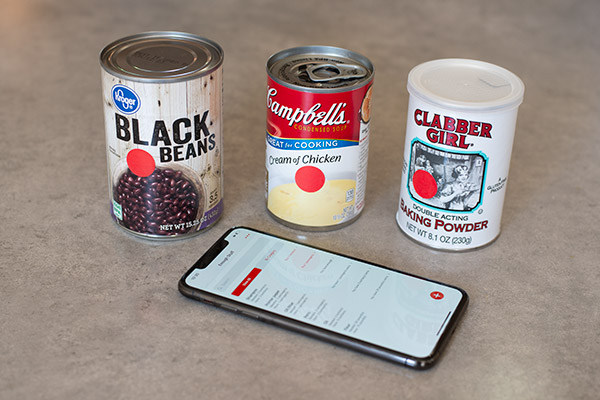
Inventory App and Sticker Dots
Use sticker dots and an easy inventory app, Enough Stuff, to keep track of your food supplies, toiletries and other stuff of all kinds.

Creating an Easy Cooking System
Creating a simple, versatile cooking system can enable you to serve delicious meals at home even on days when you are swamped.
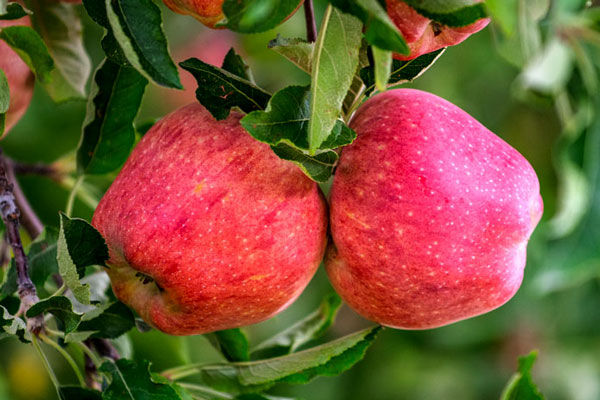
Eating Food in Season
Eating locally grown food in season is a great strategy for weight loss, good health, saving money and protecting the environment.
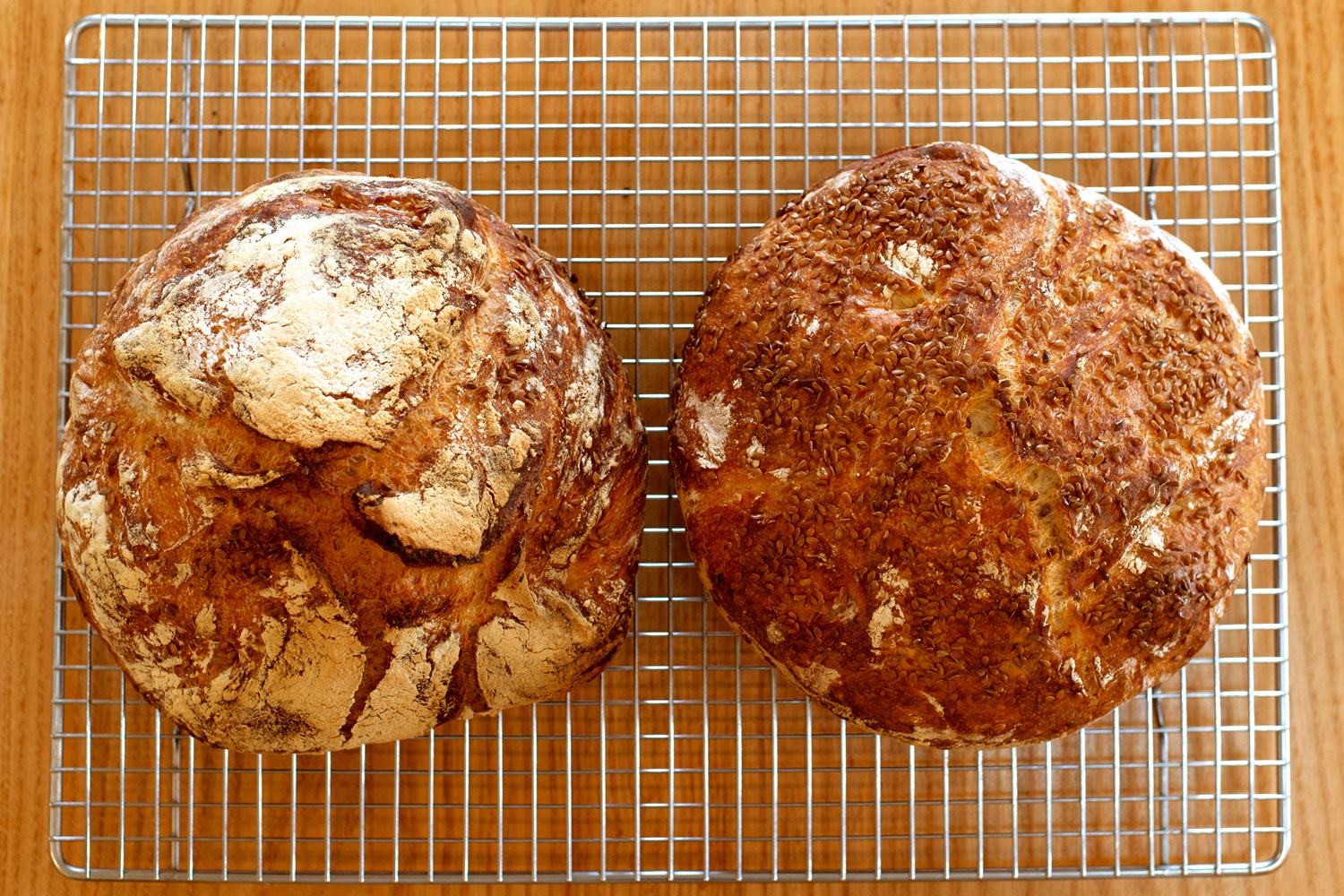
Great Global Pandemic Bake Off
Where have all the flours gone? A home baking surge has sparked a flour and yeast shortage as mills scramble to reroute supply lines.

Beyond Recipes
Beyond the world of recipe-based cooking is an adventurous, affordable, easy way of cooking that combines the basics with variety.

Anatomy of an Enchilada
The wide variety of Mexican dishes can obscure their common underlying spice and preparation base.
